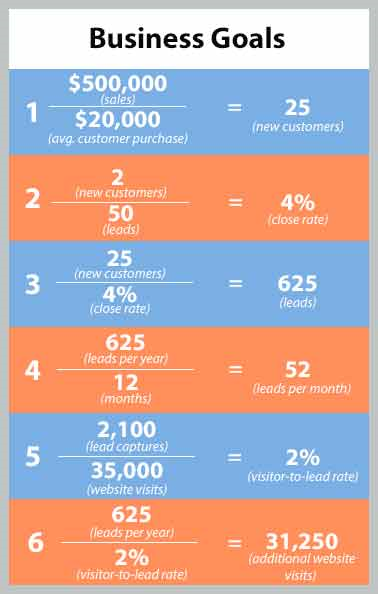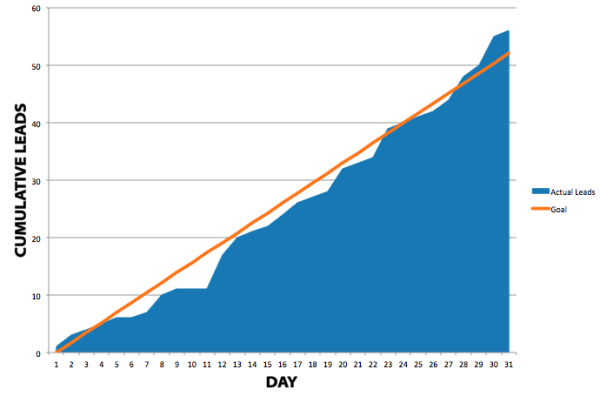If you work in a large organization, you're probably fortunate to have people devoted to creating and setting up testing and tracking mechanisms. People who also provide reports and analyses so you can make decisions about what to do next. Whether that's to change strategies, adjust calls to action, rewrite landing pages, CTAs or email copy, tweak lead capture forms, change workflow rules, modify segmentation parameters, rewrite or create new content — there are thousands of things you can test, track and analyze.
That can feel overwhelming, especially if you're just starting out. Take a deep breath. Even if you don't have lots of resources to help you, there's still a lot you can do to keep your company and your marketing on course. Experimenting with dozens of different "what if" scenarios may just confuse the situation, rather than help. To keep from getting lost in analysis paralysis, let's start at the beginning. Before you know what to track, test and analyze (so you know what to do next), clarify your business and marketing goals and get data on your firm's current performance.
CLARIFY BUSINESS AND MARKETING GOALS
Just about every company's most important goals revolve around growing revenue and profit (there are always exceptions). Some companies get into great detail about how much revenue comes from where — for instance from returning versus new customers or from different types of customers, etc. For our purposes, we're going to keep our examples uncomplicated and easy to follow....
Let's say your company's goal is $500,000 in sales from new customers this year.
 1. Let's also assume that on average, a new customer buys $20,000 of products and/or services in a year. You need 25 new customers to meet your goal.
1. Let's also assume that on average, a new customer buys $20,000 of products and/or services in a year. You need 25 new customers to meet your goal.
2. You've also got a sales team in place. Last year for every 50 sales qualified leads with whom they talked, they closed 2 of them. That turns out to be a 4% close rate.
3. Armed with that info, you need 625 leads/year to reach your sales goal.
4. Projecting out (assuming the business is not seasonal), you'll need 52 leads per month.
5. Now calculate your visits-to-leads rate(aka "conversion rate"). This show the rate at which your website is successfully converting visitors into leads.
6. Knowing that rate, calculate how much more traffic you need to have in order to generate those 625 MQLs. Add that number (in this case, 31,250) to your current traffic of 35,000 for a grand total of66,250 website visits per year.
From this exercise, you now have your key metrics to track:
- Average purchase per new customer ($20,000+)
- Leads generated per month (52+)
- Leads converted into new customers each month (2+)
- Average sales close rate (4%+)
- Visitors-to-leads rate (2%+)
- Total number of annual website visits (66,250) or monthly visits (5,521)
These key metrics, when tracked on a regular and frequent basis, give you a clear indication of whether or not you're on track to hit that $500,000 goal.
Daily Metrics Tracking
If you're a small to mid-sized business, we suggest you keep your metrics to the 3 most important "leading" indicators: those that are good for predicting whether you've got a serious problem that needs solving, or not. If they go wonky (great technical term, eh?), all klaxons should start blaring. These metrics should be highly visible to everyone in your company, so there's no mystery and people can take the initiative to fix them ASAP.
 The most important metrics typically are: website visits, leads converted, and customers closed. These are simple trend lines that show actual progress toward your goal. How you do this, and with what tools, isn't asimportant as actually doing it — reporting consistently with reliable data. We recommend our customers use HubSpot because it provides this info in a real-time dashboard. Customers can see instantly where they stand. However, even if all you use are Excel spreadsheets with data provided on a nightly basis, that can work too. What matters most, is that you track your metrics, review them and act on the information.
The most important metrics typically are: website visits, leads converted, and customers closed. These are simple trend lines that show actual progress toward your goal. How you do this, and with what tools, isn't asimportant as actually doing it — reporting consistently with reliable data. We recommend our customers use HubSpot because it provides this info in a real-time dashboard. Customers can see instantly where they stand. However, even if all you use are Excel spreadsheets with data provided on a nightly basis, that can work too. What matters most, is that you track your metrics, review them and act on the information.Most Common "What If" Scenario and Actions to Take
We can't cover every single "what if" scenario in a single blog post. (Your eyes would begin to glaze over as your brain checked out and I'd go nuts writing it.) So with an eye toward brevity, let's take the the most common scenario and share a few actions you could take to turn it around.
Monthly Website Visits Are Trending Down
(You're watching this daily. Sound the alarm whenever it drops below your monthly trend line goal.)
1. Are your buyer personas the best ones for your business? How clear a description of your buyer persona have you created? How well have you described their buying decision journey? How accurate is it? How well do you understand their motivation for buying your product/service?
Do this:
- Validate your ideal buyer persona narratives with your sales team and actual customers.
- Ask questions, get really clear on their journeys, their information needs and timing.
- And make sure to really "get" their motivation for buying.
- Remember: every B2B buyer has a personal and a professional motivation.
- Download this free template to help you describe your ideal persona.
2. How well is your site ranking for key long-tail keywords (LTKs)? Are those LTKs becoming more or less competitive? Are these LTKs still the right ones? Do they match your ideal personas' pain / need / desire search language? Do these LTKs have sufficient search volume?
Do this:
- Once you've confirmed your LTKs, publish information-rich blog posts focused on the top 10 LTKs more often.
- Create more premium content (eBooks, infographics, special reports, white papers, tools, webinars, etc.) along with landing pages and CTAs. Make that content highly informative and useful to your buyer personas.
- It's crucial to have a range of premium content that supports them at each stage of their journey and satisfies their format consumption preferences.
- Make sure to use your personas' search language and that the posts clearly answer their questions/concerns.
3. Are your social networks growing (reach)? Are you following your buyer personas' influencers? Are you sharing content with your networks appropriately? Are they, in turn, sharing it with their networks (+1s, retweets, likes, shares)? Are you having conversations with them?
Do this:
- Make sure you're sharing a balance of your own content and other peoples' content on your networks.
- Be consistent about the type and quality of content you share. (Never share something you haven't reach/watched/heard - it will bite you when you least expect it.)
- And throw in some content that lets your own personality shine through.
- Be sure you're having "real" conversations with people - not just automatic "thx for the follow / share / RT".
- Reach out to people and compliment them, make an intelligent comment about what they shared.
It takes work, it takes time, it takes thought, but the more authentic you are, the more followers you'll attract and increase how often they'll share your content.
Other Scenarios
We'd love to hear from you about how you track, test and analyze other scenarios that you've come across. Share them in the comments.
















0 comments:
Post a Comment